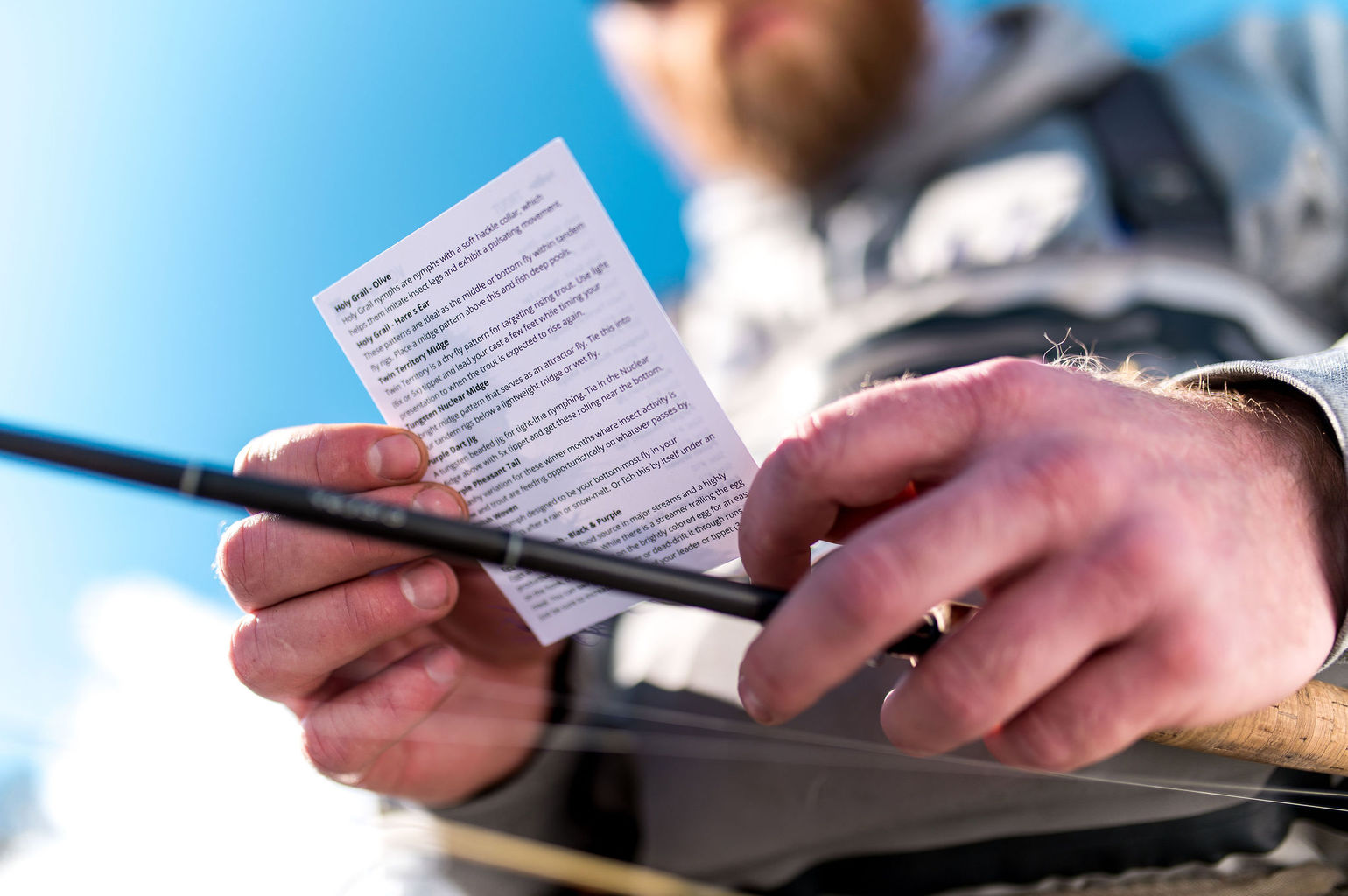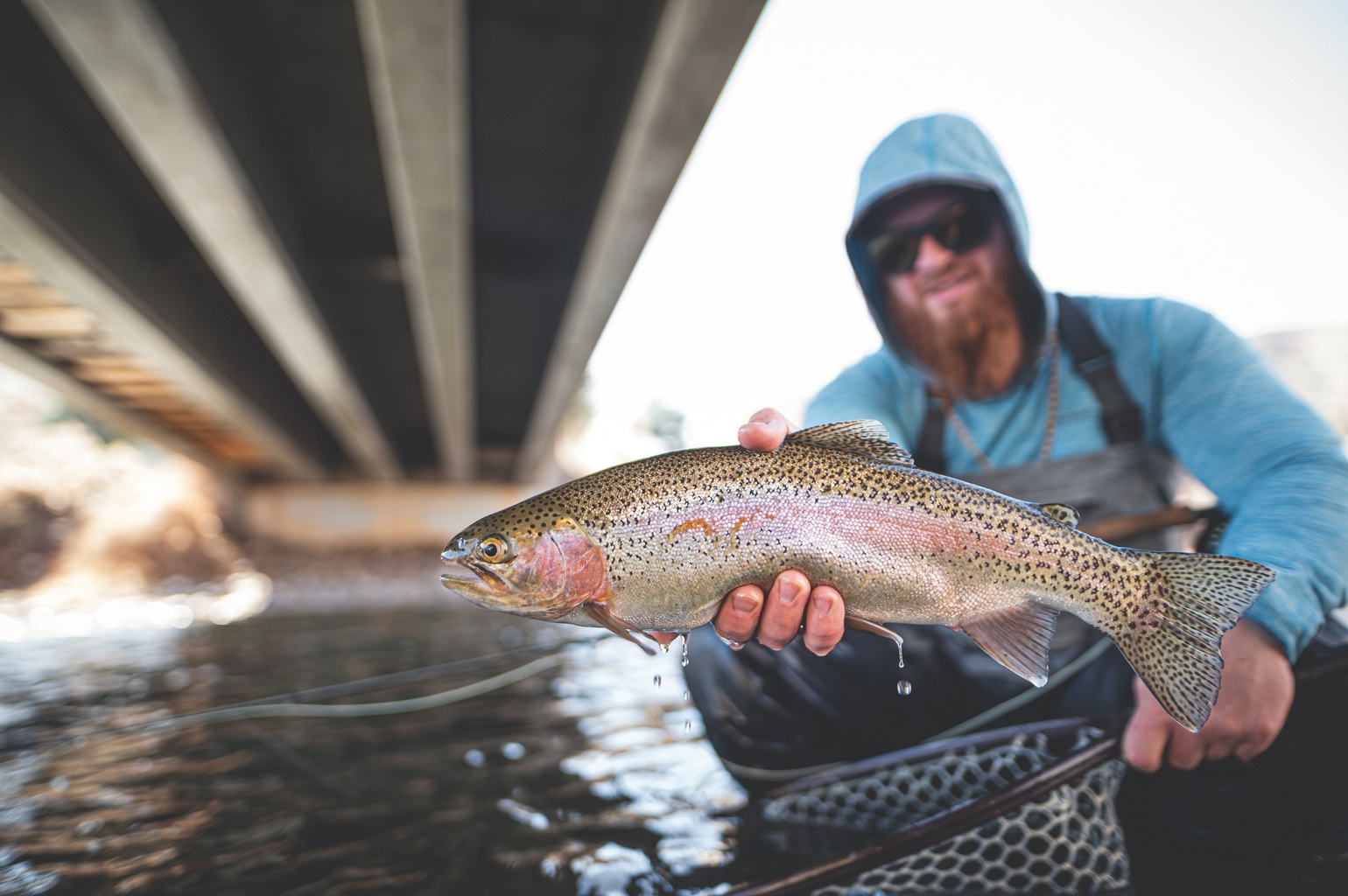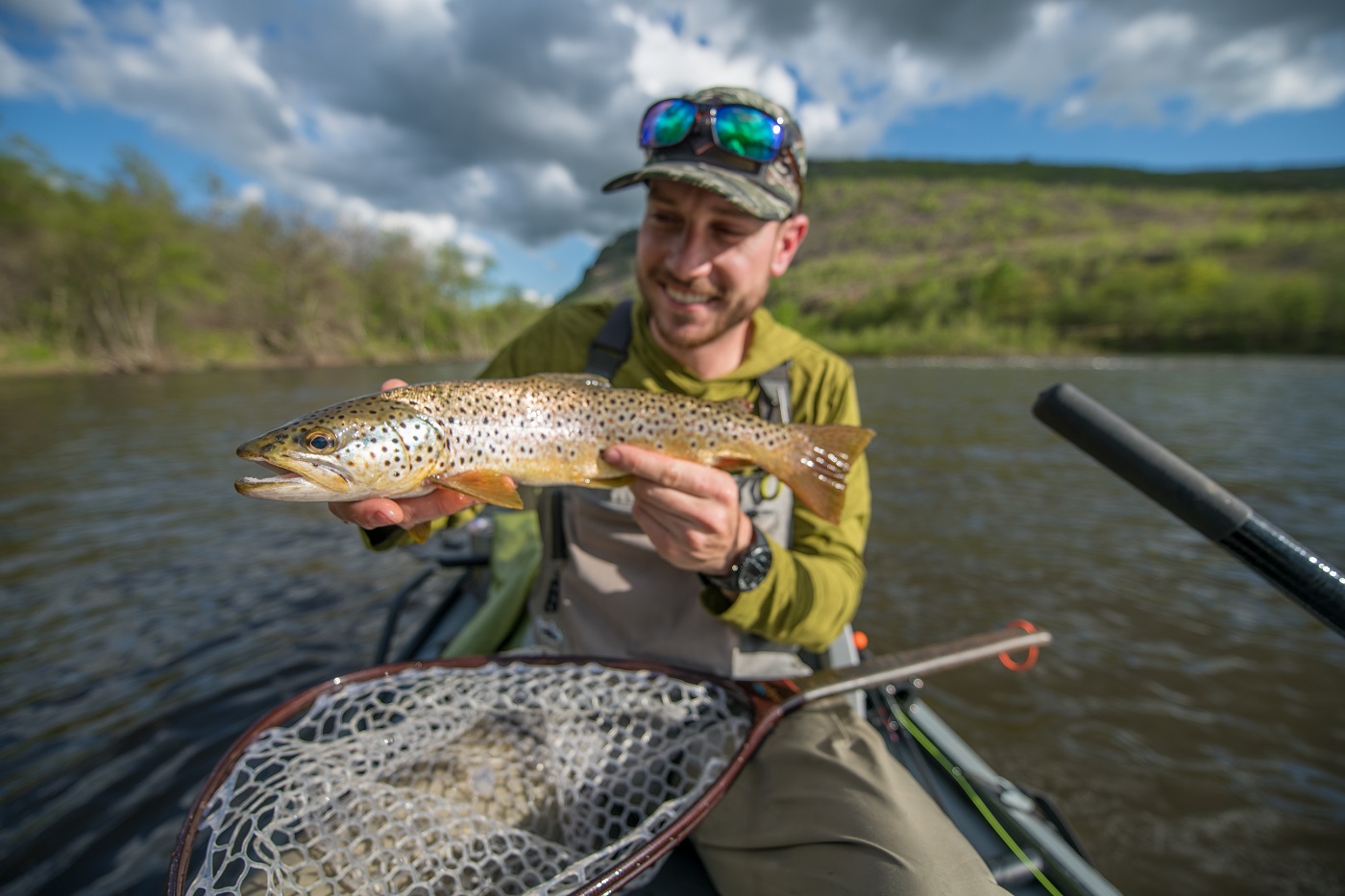Mid-West Tips for Fly Fishing Rivers During Runoff
Few situations present more of a challenge for anglers than runoff in the West.
Gentle mountain streams become raging torrents and lazy tailwaters become gushing, chocolate milk rivers as snow melts and swells waterways onec runoff gets going in late May and June.
Depending on the year, runoff can last well into summer and knowing how to combat this event is critical for those looking to get their fly fishing fix despite difficult conditions.
The thing to remember, even in these high water events, is trout are still there and they still have to eat! Just like with anything else, tactics and strategy must change to reflect the higher water and those that stay flexible and know how to find trout during runoff will still have great success.
Table of Contents
- When to fish nymphs vs. dry flies and our favorite patterns
- Find the soft water
- Head for the lakes
- Watch the stream flows with USGS
When to Use Nymphs Vs. Dry Flies
During high flows, nymphing will be the best option to catch trout. Most stretches of water will not provide enough slack water to cast a dry fly into, let alone get a rise from a trout that’s hugging the bottom.
I would say 80 percent of your catches will come from nymphing. I’ve had great success dropping a nymph on a suspension rig, such as below a strike indicator or below a buoyant dry fly pattern that can withstand the riffles, and tight-line nymphing multiple flies on a euro nymphing setup. The other 20 percent will come from strikes on the dry fly.
I only switch to a dry fly once I come across a slow-moving pool or long sections of slow-moving water that are off to the side of the main body. Well-placed casts nearly right along the edge of the stream will produce trout.
Our Favorite Trout Flies for High Water in the West.
- Jig CDC Tungsten Pheasant Tail: Size #12 – #18
- Rainbow Warrior: Size #18 – #20
- Blowtorch Jig: Size #12 – #16
- Micro Chubby Chernobyl: Size #12 – #16
- Stimulator: Size #14 – #16
- Psycho Prince Nymph: Size #14 – #18
Find the Soft Water
The biggest key for fishing streams and rivers in runoff is finding the soft water. Riffles and runs that are usually likely spots for trout can now be raging torrents that aren’t even wadable, much less fishable.
- Edges along the stream
- Eddies
- Fallen logs or branches
- Downstream of boulders and rocks
- Deep pools
- Beaver ponds
Finding the soft spots, usually near the banks, is the way to go during this time. In trying to escape the heavy current in the middle of the river, trout will push to the edges trying to find the reprieve, and as such, fish can be absolutely stacked in those slower-moving areas. In some ways, runoff can be easier to fish because it narrows down where the fish can be. Eliminate the heaviest of current, then look for the soft water that also holds some depth and odds are pretty darn good there’s some trout present.
Head for the Lakes
Runoff can quickly make a favorite stream or river a messy or dangerous option to fish.
Swift water is not to be trifled with, and a few people each year perish in the gushing currents. High mountain lakes can offer a perfect respite for those looking to get an adventure and great fishing!
While they are impacted by runoff in their own way (namely swift inlet/outlet streams and colder water temps), from ice-off until early fall the alpine lakes of the Rockies are terrific options. They can hold a variety of fish, and it’s a stark contrast to the streams and rivers at lower elevations. Targeting cruising cutthroats with dry flies with droppers while standing beneath towering snowy peaks is certainly a fine way to keep your mind off of the heavy runoff down below!
Watch and Follow the Flows
Keeping close tabs on stream flows is critical during runoff.
While it’s obviously a way to see when it has peaked, and subsequently on the way down, there are also times when you might want to time up a fishing trip for a bump in the flows. Sometimes a 100-200 CFS increase can really stir food up in drainage and create a phenomenal opportunity to have great action.
The best place to find out how high flows are is with the Water Data on the USGS site. To find out what the current flows are like for a particular stream, follow these steps.
- Go to Google or your favorite search browser.
- Search “USGS” followed by the body of water’s name. For example, “USGS Clear Creek.”
- A list of options under the WaterData.USGS.gov will appear.
- Click the link that most closely matches your stream.
This will bring up a chart with data points on it like the one shown below for Clear Creek in Golden, Colorado. I’ve extended the date range from the default 7 days to 209 days to show historical data.

For anglers that frequent the same waters year after year, take some notes on what spots fish well at each flow and that will help for next season. Some areas can fish well at 250 CFS, but aren’t so productive at 500, but then good again at 750. It all depends on the bends of the stream, structure, current, etc. Slowly learning what areas fish best at each flow can go a long way in sustained success for the coming seasons.
Runoff is both a blessing and curse for anglers venturing into the Rocky Mountain states in search of trout. It brings the promise of continued water flow through summer and fall, but presents a real challenge while it’s raging. Once the nuances of the event are learned and capitalized upon, many actually prefer fishing during this time of year. It might not be simple, and there are always days that humble even the most veteran of angler, but adjusting both technique and strategy to play off of runoff can still lead to some phenomenal days targeting trout during the early summer period!
Fly Fishing Made Easy 👍
Our Quarterly Fly Club ships 1,000’s of flies to anglers all across the United States. Receive curated fly assortments selected for the season with in-depth articles on how to fish them. Great for beginners to learn and for intermediates to discover new flies.














